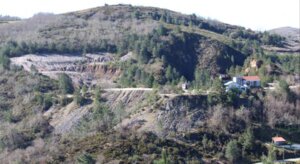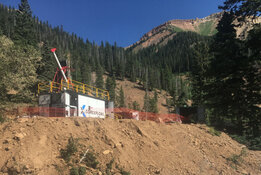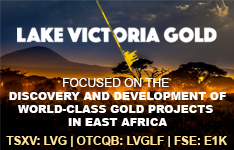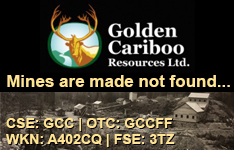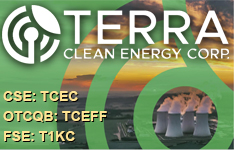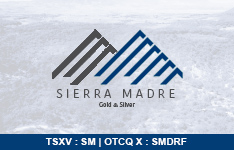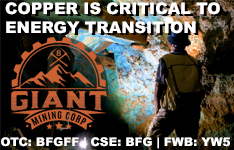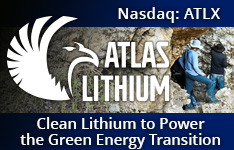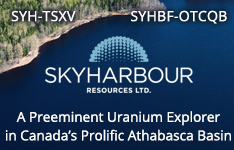Vizsla Copper Corp. (VCU:TSXV; VCUFF:OTCQB) reported assay results from the final four drill holes of its Phase 1 drill program at the Thira porphyry discovery, part of the Poplar Project in central British Columbia. The company said the results confirmed significant near-surface copper-molybdenum mineralization and expanded the mineralized footprint 200 meters to the south.
Drill hole TH25-145 intersected 237.3 meters grading 0.51% copper equivalent (CuEq), including 77.0 meters of 0.55% CuEq. Hole TH25-144 returned 240.0 meters of 0.39% CuEq, including 38.4 meters of 0.53% CuEq. All four holes intersected porphyry-style copper-molybdenum mineralization from near surface, demonstrating an east-west extent of at least 800 meters and north-south continuity of at least 500 meters. Mineralization remains open in all directions.
Executive Chairman and CEO Craig Parry said in a company news release that "Thira has delivered a new discovery of shallow, porphyry-related copper mineralization in an infrastructure-rich area of BC mining country." Vice President of Exploration Steve Blower added that the first phase of drilling "made clear that this alteration system has significant scale potential," noting that the team will continue to evaluate the system through further drilling.
The Phase 1 program comprised ten holes totaling more than 4,500 meters, targeting coincident geophysical and geochemical anomalies identified along the 8-kilometer-long Thira alteration corridor. According to the company, expanded soil geochemical and induced polarization (IP) surveys are underway to locate additional porphyry centers. Results will be incorporated into a 3D geological model to guide Phase 2 drilling.
Vizsla Copper's Poplar Project covers 44,200 hectares in central British Columbia and hosts both the Thira discovery and the Poplar copper-gold deposit. The company holds the option to earn a 100% interest in the property through expenditure commitments and cash payments until 2027. The Poplar deposit itself contains an indicated mineral resource of 152.3 million tonnes grading 0.32% copper and 0.009% molybdenum, and an inferred resource of 139.3 million tonnes grading 0.29% copper and 0.005% molybdenum.
Supply Strains and Shifting Demand Reshape the Global Copper Market
According to Metal Miner on October 6, global copper markets experienced significant strain after a series of mine disruptions curtailed production across major operations. Accidents at the Grasberg mine in Indonesia, El Teniente in Chile, and Kakula in the Democratic Republic of the Congo collectively removed hundreds of thousands of tons of expected copper output.
The report stated that analysts forecasted a worldwide copper deficit exceeding 400,000 tons in 2026, with full recovery unlikely before 2027. Following these disruptions, copper futures climbed to US$10,485 per ton, marking a 15-month high. BMI revised its projected 2026 supply shortfall to 400,000 tons, while Citi issued a comparable estimate, emphasizing that supply challenges would remain elevated without substantial price adjustments to incentivize new production.
Jeff Clark of The Gold Advisor said that he remained "overweight the stock" and continued to rate it a "Buy on any weakness."
Reuters wrote on October 19 that copper demand dynamics were shifting globally as the United States and India emerged as new growth engines while China's industrial expansion slowed. Analyst Tom Price from Panmure Liberum said that "China will reduce its rate of copper consumption and stockpiling," adding that traditional drivers such as infrastructure replacement cycles outside China were re-emerging. He expected U.S. demand to reach 2.2 million tons in 2031, up nearly 50% from 2026, and India's consumption to surpass 1 million tons, representing a rise of more than 30%.
Duncan Hobbs, research director at Concord Resources, noted that "China's output of manufactured goods, particularly for export, is likely to slow down to some extent as a function of increasing pushback by countries in the West." The report also cited Benchmark Mineral Intelligence projections showing that copper demand across Asia, excluding China, was expected to rise 25% to more than 9.2 million tons between 2025 and 2030, driven largely by data centers, renewable energy, and power grid modernization.
Bloomberg reported on October 22 that copper prices advanced above US$10,800 per ton after Goldman Sachs highlighted a continued bullish sentiment among traders. The publication attributed the gains to persistent production setbacks and a conservative output forecast from Chilean producers, which added to existing supply concerns.
The metal's 20% year-to-date rally underscored the combination of constrained output and strong global consumption tied to renewable energy, construction, and electronics demand.
Expert Analysis and Market Perspective
On September 10, Taylor Combaluzier, P.Geo., Vice President and Mining Analyst at Red Cloud Securities, described Vizsla Copper's Thira drilling update as a confirmation and expansion of the company's porphyry-related copper-molybdenum-silver-gold discovery at the Poplar project. He wrote that "all the new drill holes returned porphyry-related mineralization, at grades consistent with typical BC porphyries, spanning their entire drill hole lengths."
Combaluzier noted that the mineralization extended more than 800 meters east-west and remained open in all directions, adding that the consistency of grades along 400-meter drill lengths "suggests that Thira hosts a very large mineralizing system." He further stated that Red Cloud believed "positive exploration results should help re-rate the stock," and that Vizsla Copper continued to trade at a discount, with an enterprise value of CA$31.5 million compared with peers averaging CA$79.2 million.
According to Jeff Clark's Gold Advisor on October 20, Vizsla Copper's recent drill results at the Thira discovery were described as "another strong hole of copper mineralization," reinforcing confidence in what he referred to as "a discovery in the making." Clark pointed to the company's intersection of 237 meters grading 0.51% copper equivalent and 77 meters of 0.55% CuEq as evidence of meaningful progress. He emphasized that all four final holes of the Phase 1 program demonstrated porphyry-related copper-molybdenum mineralization, expanding at least 800 meters east-west and 500 meters north-south.
Clark also noted that the stock had doubled year to date, attributing the move to investor response following the drill results. He stated that it was "not too late to buy," given that Vizsla Copper's market capitalization remained modest at approximately CA$41.8 million. Clark concluded by reaffirming his confidence in the company's growth trajectory, writing that he remained "overweight the stock" and continued to rate it a "Buy on any weakness."
Exploring the Scale of a New Copper System
The Thira discovery has emerged as a key driver of Vizsla Copper's exploration momentum. The company's September 2025 corporate presentation highlighted Thira as part of a broader 47,000-hectare district-scale copper-gold system at Poplar, located 38 kilometers north of the past-producing Huckleberry Mine. Management described the project as underexplored, with over 45,000 meters of historical drilling focused on less than 2% of the land package.
 Streetwise Ownership Overview*
Streetwise Ownership Overview*
Vizsla Copper Corp. (VCU:TSX; VCUFF:OTCMKTS)
Ongoing surveys at Thira aim to define additional porphyry centers along the 8-by-2-kilometer corridor, building on drill success that first identified 345.3 meters of 0.43% CuEq in July 2025. According to the presentation, Phase 2 exploration will further evaluate new targets while expanding work at the Thira system, supported by proximity to power lines, roads, and deep-sea ports in Prince Rupert, Kitimat, and Stewart.
Vizsla Copper remains focused on its Poplar and Woodjam projects, both within established mining jurisdictions and featuring large historical resource bases. The company's management team, part of the Inventa Capital group led by Craig Parry and Michael Konnert, has collectively raised over US$1 billion across multiple resource ventures.
Ownership and Share Structure
According to LSEG, 6.8% of Vizsla Copper is held by management and insiders. Of them, CEO Craig Perry holds the most at 4.82%. The rest is retail.
Vizsla Copper has 318.52 million free float shares, a market cap of CA$27.39 million, and a 52-week range of CA$0.05 to CA$0.16.
| Want to be the first to know about interesting Copper and Base Metals investment ideas? Sign up to receive the FREE Streetwise Reports' newsletter. | Subscribe |
Important Disclosures:
- James Guttman wrote this article for Streetwise Reports LLC and provides services to Streetwise Reports as an employee.
- This article does not constitute investment advice and is not a solicitation for any investment. Streetwise Reports does not render general or specific investment advice and the information on Streetwise Reports should not be considered a recommendation to buy or sell any security. Each reader is encouraged to consult with his or her personal financial adviser and perform their own comprehensive investment research. By opening this page, each reader accepts and agrees to Streetwise Reports' terms of use and full legal disclaimer. Streetwise Reports does not endorse or recommend the business, products, services or securities of any company.
For additional disclosures, please click here.


